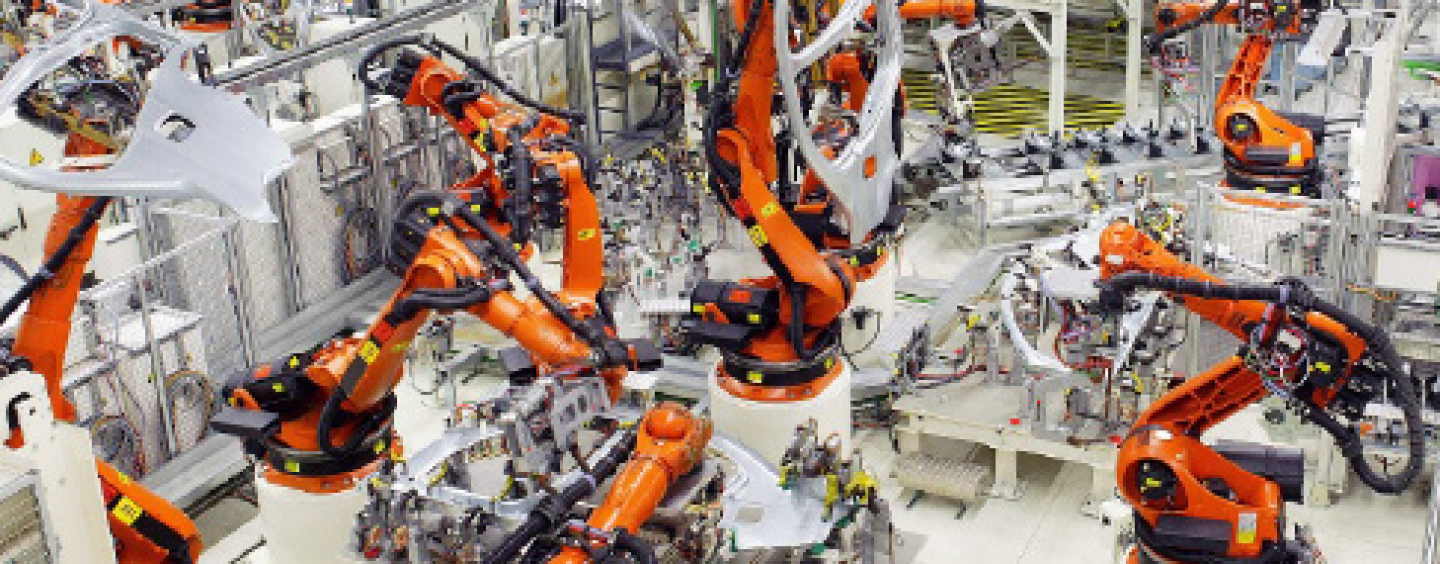
KUKA Systems minimizes energy consumption in industrial robots
by Anoop Gangadharan November 22, 2019KUKA plans and implements automated production and assembly lines providing complete solutions for joining, assembly and handling operations in automotive and other industries. With energy consumption becoming a key aspect in robotics, KUKA had recently participated with other companies in a project supported by the German Ministry of Education & Research with the aim of achieving a 50% reduction of energy usage in the production of car bodies. KUKA also launched its own project on energy efficiency, including the development of a tool to predict the energy consumption of a complete production line at the planning stage. Read on to learn how KUKA embarked on energy efficient production of body in whites.
Energy efficient manufacturing
In any body in white shop, there are several ‘cells’ where different car body parts are processed and assembled. From underbody and sidewalls to other add on components, these parts need to be joined, along an assembly line. Among others, the core technologies in the body in white shop include: robotics for joining, assembly and handling and a transport system for transporting components across various cells or stations on the production line. In order to assess the effectiveness and energy efficiency of the body in white shop, KUKA maintains a detailed database of information on the energy consumption of the components used in the production line; transport systems, robotics and joining technologies. While some data is provided by the manufacturers of the system components, others require reliable measurements of actual energy consumption in order to try out various optimization options. From a few milliamps to a few thousand amperes, KUKA needed to evaluate their systems across a wide variety of boundary conditions and test cases in :
- Robotics – Used for joining, assembly and handling operations, KUKA robots use motors for each of its six axes controlled by three phase inverters. It ‘s 60kW power consumption at full operation drops to 200W at rest while in hibernate mode it drops further to 18W. A variety of movement profiles need to be tested to optimize efficiency.
- Transport system – KS PULSE – The PULSE System (Propulsion Using Linear Synchronous Energy) transports pallets via a carrier using magnets on a chassis and linear synchronous motors on a system of rails. Unlike traditional conveyer based systems, the KS PULSE eliminates the need for rotary motors, gears, belts and other moving parts thus offering lower failures, higher
speed and greater energy savings.
“Our goal for energy savings is in the double-digit percentage range. The investment for the measures required for this purpose should be amortised within two to three years”, says project manager Matthias Paukner. But the challenge was in the diversity, detail and reliability of measurements required. An enormous range needed to be covered from a few thousand amperes during welding to a few milliamps in hibernate mode.
A hybrid measurement solution
For measurements on the robots and other equipment KUKA Systems uses Yokogawa’s PX8000 Precision Power Scope with current clamps on all three phases on the power input of the controller. In addition to measuring power directly from the current and voltage waveforms, the instrument is also used to measure other signals. As the world’s first precision power scope, bringing oscilloscope-style time-based measurement to the world of power analyzers, the PX8000 offers four channels,to perform standard multi-phase power measurements alongside oscilloscope-specific features such as cursor-based specific time period measurements to enable analysis of waveforms with transient components.
“We chose the PX8000 because we wanted to capture very short pulses and spikes which typically occur in spot welding and during braking or acceleration processes”, says Matthias Paukner. The PX8000 proved particularly useful in demonstrating the effectiveness of certain measures that KUKA Systems has developed including special control programs that perform predetermined movements. In particular, the PX8000 has the ability to both record data and carry out subsequent analysis. This allows the measured values to be transmitted to a database containing data for a variety of movement profiles from many different components of a production line. Currently about 300 different values are stored for each robot type. The measured power values then form the basis for the simulation of the energy consumption of an entire production hall.
Data driven optimization
By optimizing heights, payload weight, station length, acceleration and deceleration or time allotment to different stations , KUKA were able to find the best ways to reduce transport time, improve productivity and reduce costs across the body in white shop. “These measurements allowed us to capture the actual energy consumption and try out various optimization options”, says Tobias Zimmermann, development engineer at KUKA Systems: “We mostly consider complete tasks rather than just individual movements, and we also include measurements at individual customers’ premises.” “We also measure the energy consumption of the various tools, which offers further opportunities for savings”, adds Matthias Paukner, project development manager at KUKA Systems: In addition, KUKA takes into account the times when the robot is inactive, such as at night-time, by switching everything to “hibernate mode”, a state similar to the standby mode of consumer PCs, which can reduce consumption by 90%.
Check out the case study to learn how KUKA minimized energy consumption in automotive body production.


No Comments so far
Jump into a conversationNo Comments Yet!
You can be the one to start a conversation.